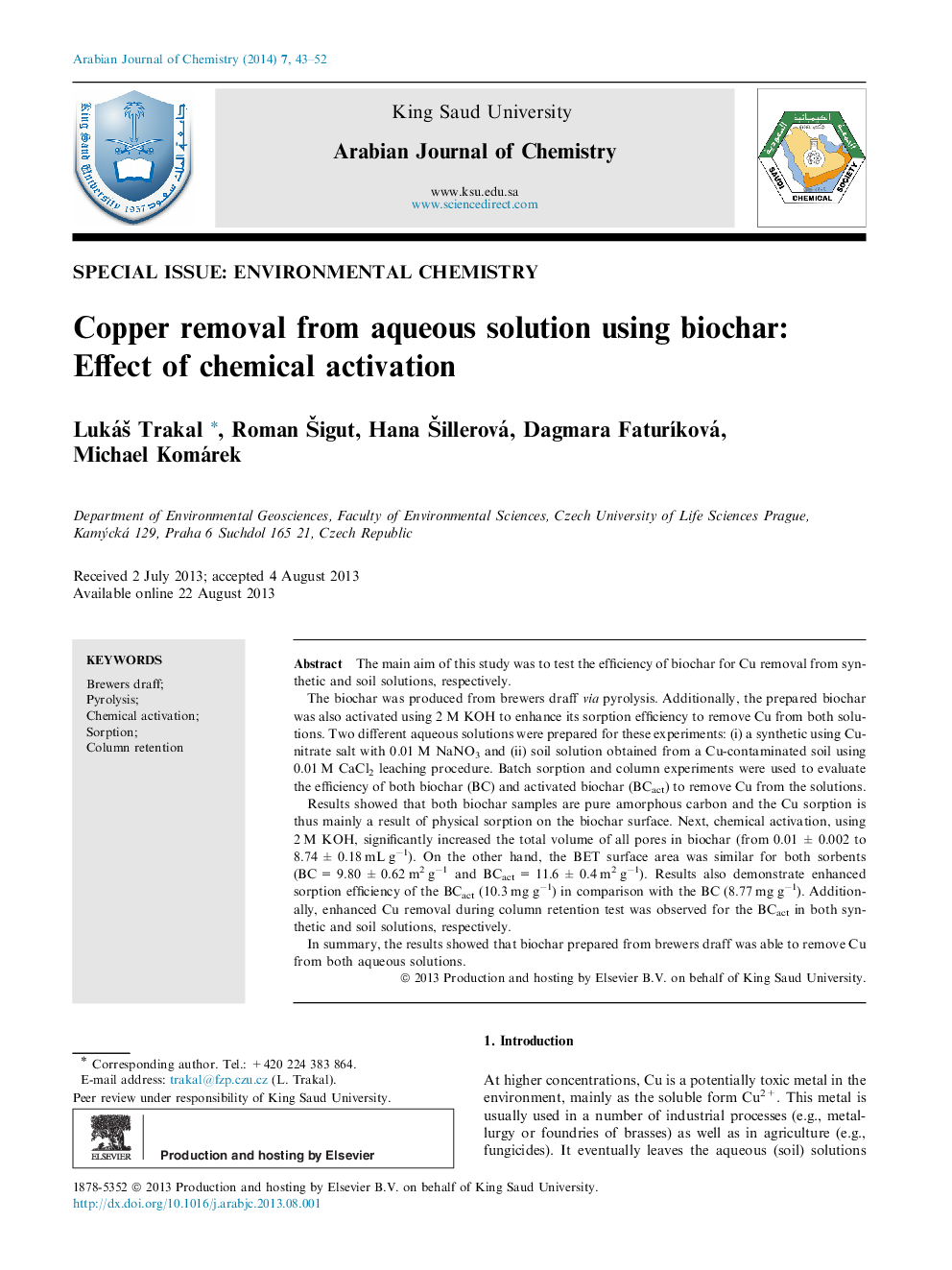| Article ID | Journal | Published Year | Pages | File Type |
|---|---|---|---|---|
| 1250684 | Arabian Journal of Chemistry | 2014 | 10 Pages |
The main aim of this study was to test the efficiency of biochar for Cu removal from synthetic and soil solutions, respectively.The biochar was produced from brewers draff via pyrolysis. Additionally, the prepared biochar was also activated using 2 M KOH to enhance its sorption efficiency to remove Cu from both solutions. Two different aqueous solutions were prepared for these experiments: (i) a synthetic using Cu-nitrate salt with 0.01 M NaNO3 and (ii) soil solution obtained from a Cu-contaminated soil using 0.01 M CaCl2 leaching procedure. Batch sorption and column experiments were used to evaluate the efficiency of both biochar (BC) and activated biochar (BCact) to remove Cu from the solutions.Results showed that both biochar samples are pure amorphous carbon and the Cu sorption is thus mainly a result of physical sorption on the biochar surface. Next, chemical activation, using 2 M KOH, significantly increased the total volume of all pores in biochar (from 0.01 ± 0.002 to 8.74 ± 0.18 mL g−1). On the other hand, the BET surface area was similar for both sorbents (BC = 9.80 ± 0.62 m2 g−1 and BCact = 11.6 ± 0.4 m2 g−1). Results also demonstrate enhanced sorption efficiency of the BCact (10.3 mg g−1) in comparison with the BC (8.77 mg g−1). Additionally, enhanced Cu removal during column retention test was observed for the BCact in both synthetic and soil solutions, respectively.In summary, the results showed that biochar prepared from brewers draff was able to remove Cu from both aqueous solutions.
